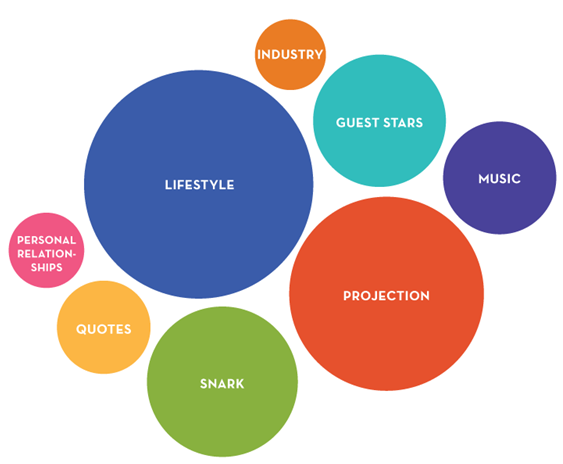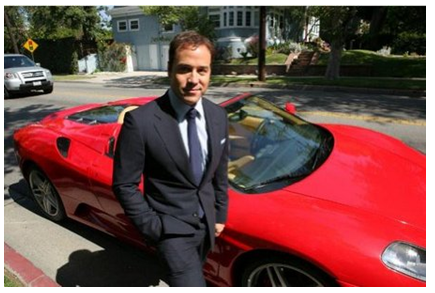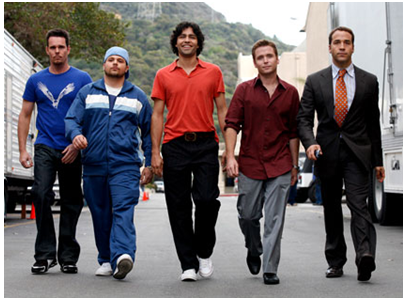veilles / 19 Avr 2012
TV watching is not passive

There are so many “second screen haters,” as I call them, who believe TV watching is a passive experience and that there isn’t ample room for some additional “stuff” popping up on their phones while they watch their favorite shows. This is a completely valid point! In a world where we work long hours and watch television as a release from the daily grind, it’s hard to imagine that we would want to do much more. However, here at Miso we want to challenge this assumption.
As a result, design and user research at Miso consists of more than just understanding the overall usability of our product. We have the responsibility and desire to understand the general television watching habits of our users. Sabrina and I (the entire design team) carved out a sizable chunk of our time to construct our very first high-level user study. We wanted to begin to understand what goes on in the average person’s mind while they watch TV.
What kind of research did we do?
We decided on a two week plan to gather data that would help us better understand the kinds of things people are thinking about and willing to broadcast to their social networks while watching television. The research we conducted consisted of 2 main sources:
1.TV Journal Exercise: We asked several participants to jot down notes for a week while they went through their typical TV watching routine. Then we scheduled follow up interviews to probe for more details.
2. Focus Groups: This was similar to the TV Journal Exercise except we asked participants to come into our offices and do this in front of us and with other viewers. Two groups came in of varied genders. One group watched an episode of “How I Met Your Mother” and the other watched an episode of “Entourage.” Participants were asked to jot notes down while they watched the show and interact like they normally would with everyone else in the room. This was followed up by a group discussion.
How did we analyze the results?
Once we collected a massive amount of data, it was time for us to sit down and identify any existing patterns. To do this, we utilized a good ol’ technique that we learned from our HCI days at Carnegie Mellon called affinity diagramming. Affinity diagramming is a technique used to sort large amounts of data into logical groups. Observations and/or quotes from user studies are written on sticky notes which are then sorted into categories to imply patterns in the data. This was extremely useful in finding emergent themes across our data about the kinds of things people are thinking about while they watch TV.
When are most thoughts/activities occurring around a show?
What were the broad categories that we found?
Lifestyle: “What’s that shirt? What kind of car is that?”
Basically, we can all be pretty materialistic… In watching these shows, our participants consistently were looking for ways to understand the brands that the actors were rocking. What kind of scotch does Don Draper drink? What couture dress is Blair Waldorf wearing tonight? Even if you can’t afford the same items, people seemed to derive satisfaction simply out of knowing the details behind their favorite TV characters’ lifestyles.
Projection: “I wish I was a player.”
In tandem with lifestyle, participants were taking these lifestyle indicators and wanting to incorporate them into their own lives in order to have some sort of tangible outcome. Thoughts ranged from “I need to order stationary for the office” to more lofty goals like “I need to buy a car like Ari Gold to score all the ladies.”
Music: “What’s that song?”
Participants often wondered about songs playing during crucial moments during the show. At the end of one study, two people got into an argument about which band was singing during the end-credits (“Does Jaramaquoi still make music?!”) and had to rely on Shazam to settle their debate.
Quotes: “What did they just say? I want to share that!”
Participants often wanted to share out exact quotes of the funny things that characters in the show were saying. In normal situations they explained that often times they would quickly rewind to get the exact quote.
“Snark”: “I bet none of the actors on this show even know how to read.”
A significant chunk of the thoughts written by our participants consisted of snarky and sarcastic commentary relating to what was happening on the screen. There were many eyerolls and exasperated sighs as people commented on how “toolish” the characters of Entourage were in their various outfits and dialogues. (To be fair, Vince was wearing a sweater vest).
Industry: “I want to understand how sitcoms are constructed. Why are there those annoying laugh tracks?”
We were surprised to find that participants were curious about more technical topics connected to the production side of the TV industry. They were commenting on how “How I Met Your Mother” has a formulaic approach to most episodes. One participant even mentioned that he wondered whether it was cathartic for Neil Patrick Harris to play a womanizer.
Personal Relationships: “DON’T KISS HER”
Participants reactions to the shows were highly influenced by their Personal relationships and experiences. At the end of “How I Met Your Mother,” two core characters got back together after a messy break up. A recently engaged participant thought this was cute and exclaimed with joy while another participant who recently went through a break up loudly objected to their reunion.
In Conclusion..
•TV watching isn’t as passive as we might think. In fact, the mind is bursting with all sorts of thoughts during the time of an episode.
•We were able to categorize thoughts during several TV shows into several broad categories that allowed us to see that there’s high potential for a second screen experience.
•Lifestyle and Projection were the areas that we found the most activity.
Running our very first high level study on television watching was definitely a challenge, but it was a great learning experience. It confirmed our belief that there is ample opportunity to provide content to users while they watch television because their brains are exploding with all kinds of thoughts and questions. We were able to categorize the thoughts of users while watching TV in a way that could inform the need for a second screen experience as well as ideas for what could make a good one.
While I wouldn’t call this a highly scientific user study, I think it was an eye-opening experience for us as designers to watch people interact with television in general. Observing users while they watch TV and interact with SideShows is going to be paramount in informing our product design and content strategy, so stay tuned for many more research updates in the future.





